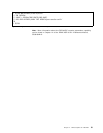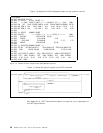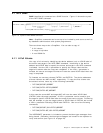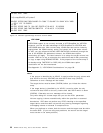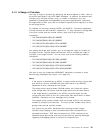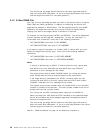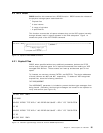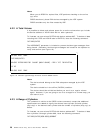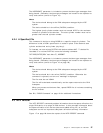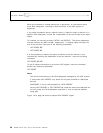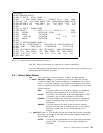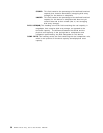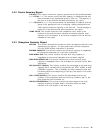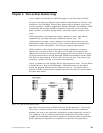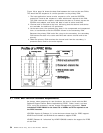
The NOPROMPT parameter is included to prevent decision-type messages from
being issued. Otherwise, decision-type messages are issued for the operator to
verify and confirm (similar to Figure 16).
Notes:
The device should belong to the RVA subsystem managed by the VSE
system.
The device should be in the offline (DVCDN) condition.
The highest (end) cylinder number must not exceed 32767 or the maximum
number of cylinders of the devices. The start cylinder number must not be
greater than the end cylinder number.
4.2.4 A Specified File
This command is similar to doing DDSR for a specific range of cylinders. The
difference is that a DSN= specification is coded in place of the decimal start
cylinder and decimal end cylinder (dcyl-dcyl).
To illustrate, we use volume PATEV3 with device address 80F. To delete file
′test.data.3′ on volume PATEV3, issue the following command:
IXFP DDSR,PATEV3(DSN=′ test.data.3′),NOPROMPT
The NOPROMPT parameter is included to prevent decision-type messages from
being issued. Otherwise, decision-type messages are issued for the operator to
verify and confirm (similar to Figure 16 on page 26).
Notes:
The device should belong to the RVA subsystem managed by the VSE
system.
The device should be in the online (DVCUP) condition. Otherwise the
command is rejected, and an error message is displayed.
The file must be non-VSAM.
The file will be deleted unconditionally and the space returned to the RVA
freespace.
When you process multivolume files, repeat DDSR for all volumes containing
the file extents.
See B.2, “DDSR Command” on page 49 for additional illustrations.
4.3 IXFP REPORT
The IXFP REPORT command provides information about the space utilization of a
single RVA device or a range of RVA devices. It also provides information about
the space utilization of all devices (that were added during IPL) of an RVA
subsystem as well as important subsystem utilization summary information.
Figure 17 on page 28 shows the syntax of the IXFP REPORT command.
Chapter 4. IXFP/SnapShot for VSE/ESA 27



